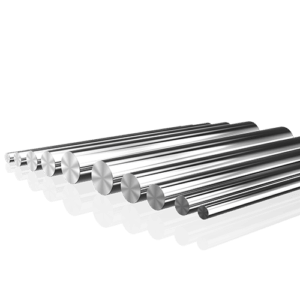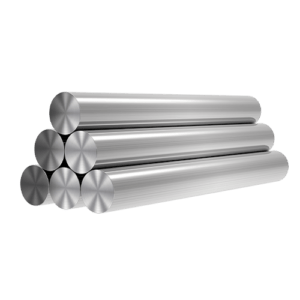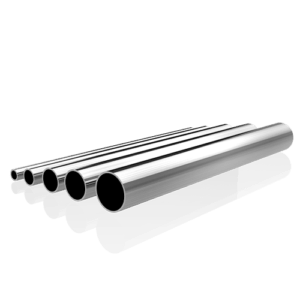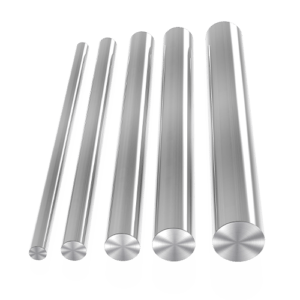Welcome to My Blog!
Before we dive into the content, I’d love for you to join me on my social media platforms where I share more insights, engage with the community, and post updates. Here’s how you can connect with me:
Facebook:https://www.facebook.com/profile.php?id=100090063158454
Now, let’s get started on our journey together. I hope you find the content here insightful, engaging, and valuable.
Table of Contents
Introduction

Stainless steel bar stocks are versatile materials renowned for their exceptional properties, making them indispensable in a wide array of industries. These solid, cylindrical pieces of stainless steel offer a unique blend of strength, durability, and corrosion resistance, surpassing traditional materials in numerous applications. This comprehensive guide delves into the world of stainless steel bar stock, exploring their diverse applications, significant benefits, and frequently asked questions. By understanding the nuances of this remarkable material, you can harness its potential to elevate your projects and achieve optimal performance.
Understanding Stainless Steel Bar Stocks
Stainless steel bar stocks are produced through a meticulous metallurgical process involving alloying steel with chromium. This strategic addition of chromium results in the formation of a protective oxide layer on the surface, acting as a formidable barrier against corrosion. Available in a multitude of grades and sizes, stainless steel bar stocks cater to a wide range of industrial needs.
Benefits of Stainless Steel Bar Stocks
- Unparalleled Corrosion Resistance: The most defining characteristic of stainless steel is its exceptional resistance to corrosion. This remarkable property stems from the formation of a chromium oxide layer, which effectively shields the underlying metal from corrosive agents. As a result, stainless steel bar stocks are ideally suited for applications in harsh environments, such as marine, chemical, and food processing industries.
- Exceptional Strength and Durability: Stainless steel bar stock exhibit extraordinary strength and durability, making them suitable for demanding structural applications and components that require high load-bearing capacity. This robustness ensures long-lasting performance and minimizes the need for frequent replacements.
- Optimal Hygiene and Sanitation: The non-porous surface of stainless steel is inherently hygienic and easy to clean and sanitize. This property is particularly valuable in industries where maintaining a high level of cleanliness is paramount, such as food processing, healthcare, and pharmaceutical manufacturing.
- Aesthetic Appeal: Stainless steel possesses a sleek and modern appearance, making it a popular choice for architectural and decorative applications. Its lustrous finish enhances the visual appeal of structures and products, elevating their overall aesthetic value.
- Versatility and Formability: Stainless steel bar stocks are highly versatile and can be easily fabricated and machined into a wide range of shapes and sizes. This flexibility allows for the creation of intricate components and customized solutions to meet specific engineering requirements.
Applications of Stainless Steel Bar Stocks


The exceptional properties of stainless steel bar stocks have made them indispensable in numerous industries. Some of the key applications include:
- Construction: Stainless steel bar stocks are extensively used in construction for structural components, railings, handrails, and decorative elements. Their durability and corrosion resistance ensure long-lasting performance, even in harsh outdoor environments.
- Automotive: In the automotive industry, stainless steel bar stocks find applications in exhaust systems, suspension components, and various trim elements. Their strength, corrosion resistance, and heat resistance make them ideal for these demanding applications.
- Aerospace: The aerospace industry relies on stainless steel bar stock for critical components due to their exceptional strength-to-weight ratio and corrosion resistance. These properties are crucial for ensuring the safety and reliability of aircraft.
- Food Processing: The food processing industry heavily relies on stainless steel bar stocks for manufacturing equipment, conveyor systems, and storage tanks. Their hygienic properties and resistance to corrosion and bacterial growth are essential for maintaining food safety and quality.
- Chemical Processing: In the chemical processing industry, stainless steel bar stocks are used in piping, valves, and equipment that handle corrosive substances. Their superior corrosion resistance and durability make them ideal for these demanding applications.
- Medical Equipment: The medical equipment industry utilizes stainless steel bar stocks for surgical instruments, hospital equipment, and implants. Their biocompatibility, corrosion resistance, and ease of sterilization make them suitable for these critical applications.
- Marine Industry: The marine industry extensively uses stainless steel bar stocks in shipbuilding, offshore platforms, and marine hardware. Their exceptional corrosion resistance and durability enable them to withstand the harsh marine environment.
Types of Stainless Steel Bar Stocks
Stainless steel bar stocks are available in various grades, each with unique properties tailored to specific applications. Some of the most common grades include:
- Type 304: The most widely used grade of stainless steel, offering a good balance of corrosion resistance and strength. It is suitable for a wide range of applications, including food processing, chemical processing, and general-purpose use.
- Type 316: This grade is highly resistant to corrosion in chloride environments, making it ideal for marine applications, chemical processing, and wastewater treatment.
- Type 410: A martensitic stainless steel grade known for its high strength and hardness. It is commonly used in cutlery, valve components, and other applications where wear resistance is crucial.
Comparison of Stainless Steel Bar Stocks and Carbon Steel
| Feature | Stainless Steel | Carbon Steel |
|---|---|---|
| Corrosion Resistance | Excellent | Poor |
| Strength | High | High |
| Cost | Higher | Lower |
| Machinability | Good | Good |
| Weldability | Good | Good |
Selecting the Right Stainless Steel Grade

Selecting the appropriate stainless steel grade is crucial to ensure optimal performance and longevity. Several factors must be considered when making this decision:
- Corrosion Environment: The type and severity of the corrosive substances the material will encounter.
- Required Strength: The load-bearing capacity needed for the application.
- Temperature Requirements: The operating temperature range.
- Fabrication Methods: The manufacturing processes involved.
- Cost Considerations: The budget available for the project.
Conclusion
Stainless steel bar stocks have emerged as a cornerstone material in numerous industries, revolutionizing the way we design, engineer, and manufacture products. Their exceptional properties, including corrosion resistance, strength, durability, and versatility, have made them an indispensable choice for engineers, designers, and manufacturers worldwide. By understanding the diverse applications, benefits, and selection criteria of stainless steel bar stocks, you can harness their potential to create innovative and sustainable solutions.
FAQ
What is the difference between stainless steel and carbon steel?
Stainless steel contains chromium, which forms a protective oxide layer that prevents corrosion, while carbon steel does not have this protective layer.
Can stainless steel rust?
While stainless steel is highly resistant to corrosion, it can still rust under certain conditions, such as exposure to extremely corrosive environments or improper maintenance.
How is stainless steel manufactured?
Stainless steel bar stocks are produced through a metallurgical process involving melting, alloying, and shaping.
What are the common finishes for stainless steel bar stocks?
Common finishes include mill finish, polished, brushed, and pickled.
How can I determine the grade of stainless steel?
The grade of stainless steel can be identified by its chemical composition, which is typically marked on the material.
